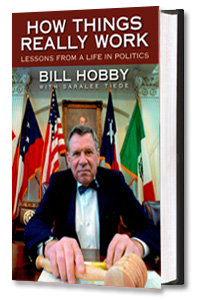The Houston Post is dead. Newspapers are special institutions. the death of a newspaper is not like the death of a grocery store or a bank or a movie theater.
However noble grocery stores are, they do not entertain, enrage or challenge people the way newspapers do. They do not have the personality that newspapers do. Grocery stores are not usually staffed with characters as colorful as those who populate newsrooms. But newspapers can fail just like grocery stores. When people don’t shop at the grocery store, the store dies.
Newspapers are outrageously expensive to produce. The business is labor intensive. It takes a lot of people to cover the news, sell the advertising, print and distribute the paper. The presses on which the paper is printed cost scores of millions of dollars and can be used only a few hours a day. The raw material (newsprint) is a commodity just like pork bellies.
At the same time, newspapers are virtually free to their readers. The subscription and single-copy prices bear little relation to the cost of putting the paper on subscribers’ doorsteps.
Ironically, the Post was the victim–not the beneficiary–of a booming economy. When the economy in Houston (and the nation) is depressed, merchants don’t buy much advertising and newspapers don’t buy much newsprint. So newsprint prices are stable. When the economy recovers, retailers buy more advertising, newspapers buy more newsprint, the newsprint producers near their capacity and raise prices.
Newsprint prices went up about 40% in the last year. For a newspaper the size of the Post, newsprint is about 40% of all expenses. (The more circulations a newspaper has the larger the newsprint factor.) And 40% of 40% is 16%. In other words, the Post’s operating costs went up by one-sixth.
The Post was the “second paper” in town. Its circulation was substantially smaller than that of the Chronicle. Therefore, its advertising rates had to be higher than those of the Chronicle on a per reader, or milline, basis. The Post was already a less efficient “buy” for an advertiser and so in no position to raise its rates to cover costs.
If a business is only marginally in the black even on a cash-flow basis, and its costs go up by one-sixth and its revenues don’t, it goes broke. The Houston Chronicle was the only possible purchaser.
So much for the grim arithmetic of prosperity.
When all the numbers are added up, a newspaper is dead. Not just a business, but a voice, a personality, that was a vital part of Houston for more than a century is gone. My family and I were involved with the Post for most of that century. My father went to work there on March 2, 1895, shortly before his 18th birthday. Our association ended in 1983 when we sold to the Toronto Sun.
Please forgive the lump in my throat.

